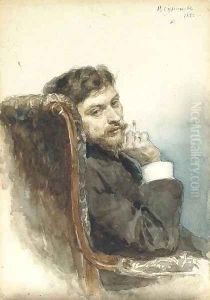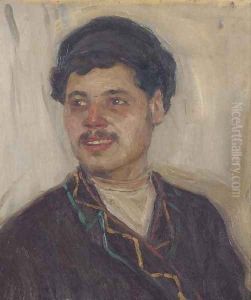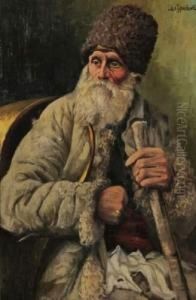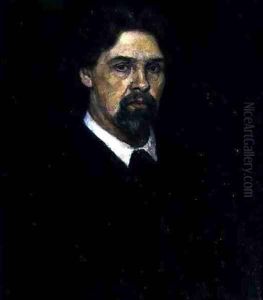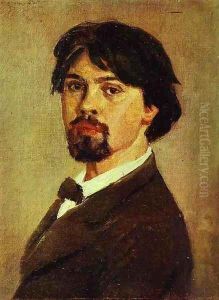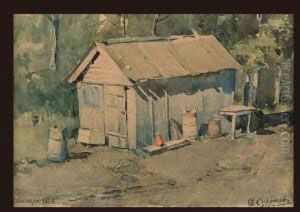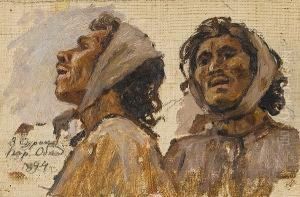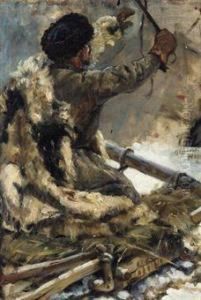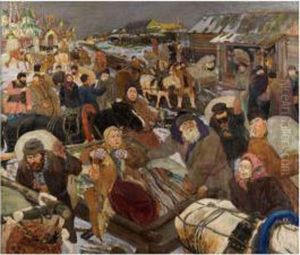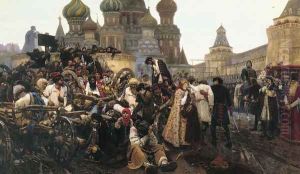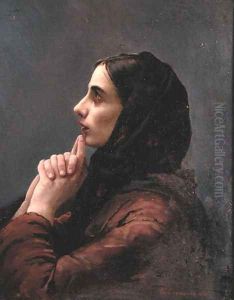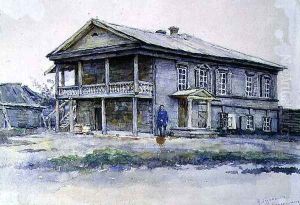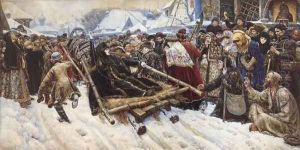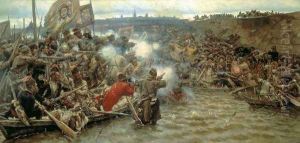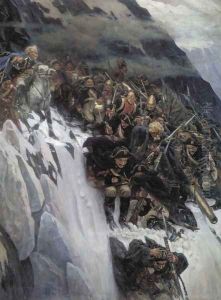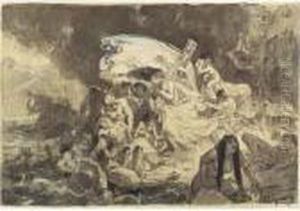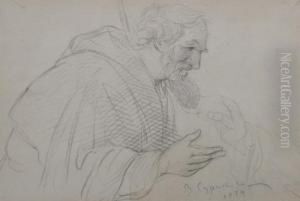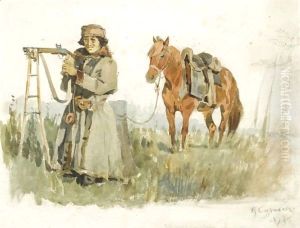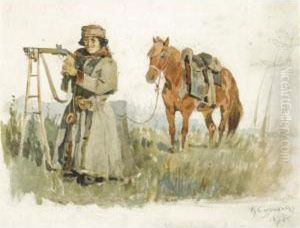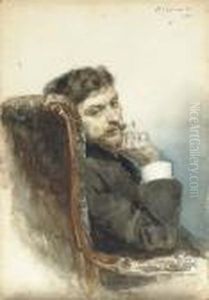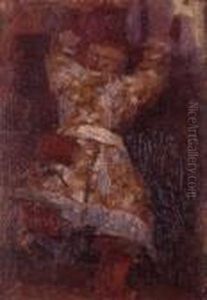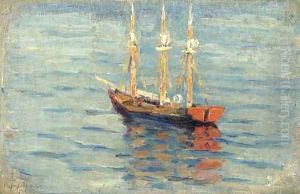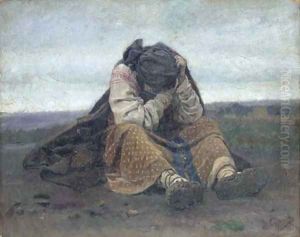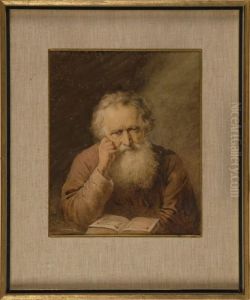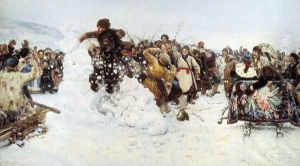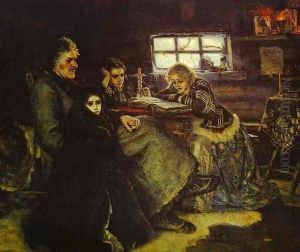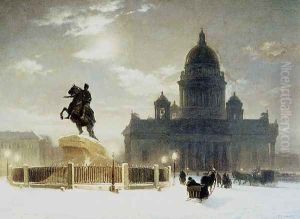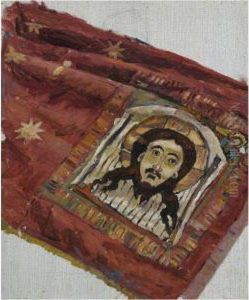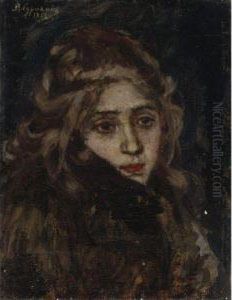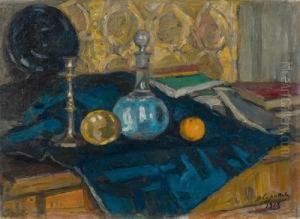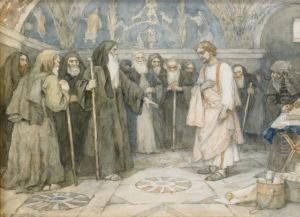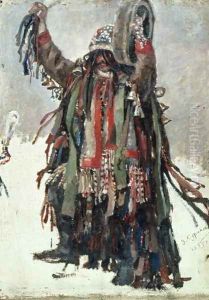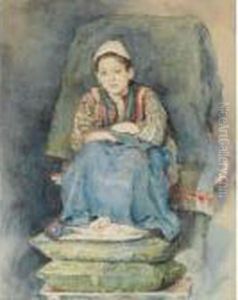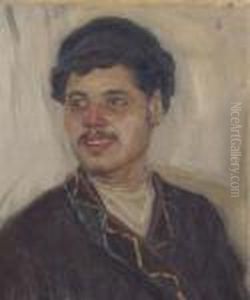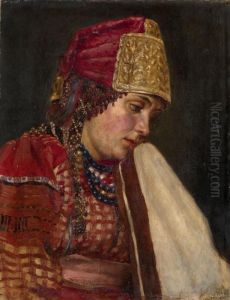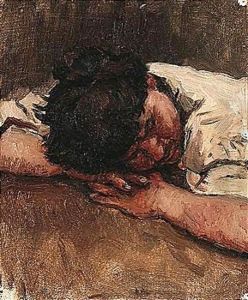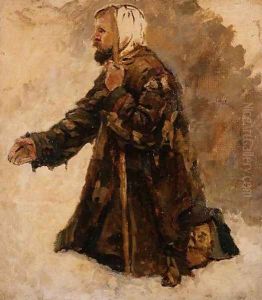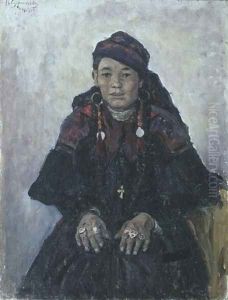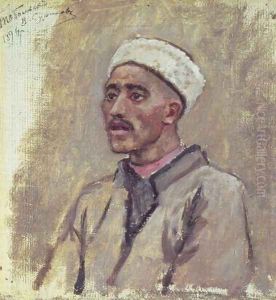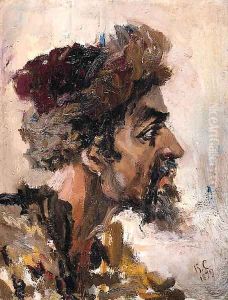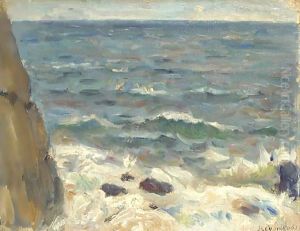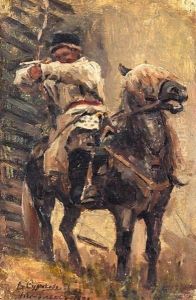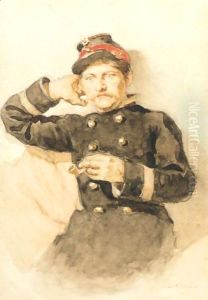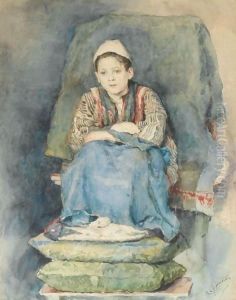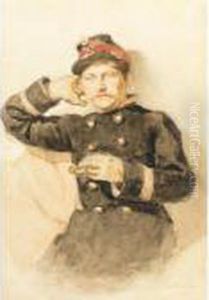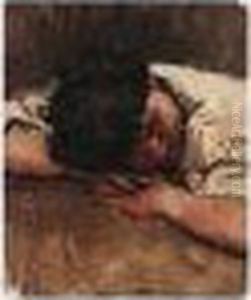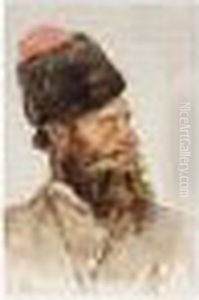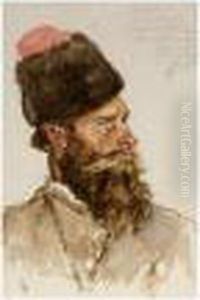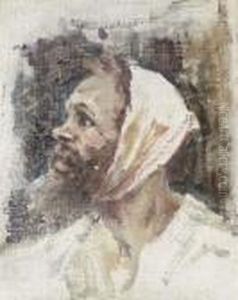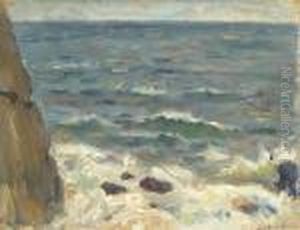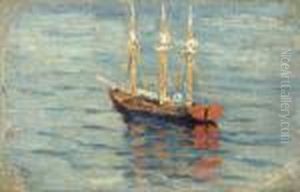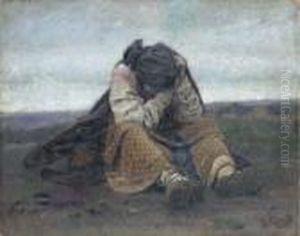Vasilij Ivanovic Surikov Paintings
Vasilij Ivanovic Surikov, born on January 24, 1848, in Krasnoyarsk, Siberia, was a distinguished Russian artist known for his grand historical paintings. His works are renowned for their dramatic intensity, vivid character portrayal, and meticulous attention to historical detail. Surikov hailed from a Cossack family, and the culture and history of his Siberian upbringing would deeply influence his artistic themes.
Surikov displayed artistic talent early in life, and he pursued his passion by studying at the Imperial Academy of Arts in Saint Petersburg. He graduated with honors in 1871 and became a member of the Peredvizhniki ('The Wanderers' or 'The Itinerants'), a group of Russian realist artists who protested against academic restrictions. His association with the Peredvizhniki, who championed accessible art depicting the lives and histories of the Russian people, was a perfect match for Surikov's interests and style.
Throughout his career, Surikov was best known for his large-scale historical paintings. His most famous works include 'The Morning of the Streltsy Execution' (1881), which depicts the aftermath of a failed uprising during the reign of Peter the Great; 'Menshikov in Berezovo' (1883), showing the downfall of a once-powerful associate of Peter the Great; and 'The Boyarynya Morozova' (1887), representing a defiant noblewoman who became a martyr for the Old Believer movement.
Surikov's art was not only celebrated for its historical accuracy but also for the way it captured the human condition and the psychological depth of its subjects. He portrayed his figures with a sense of empathy and respect, bringing to life the heroism, suffering, and resilience of his characters.
Beyond painting, Surikov was also a respected teacher. He was deeply involved in the artistic community and worked to nurture the next generation of Russian artists. His influence extended to various aspects of Russian culture, and he was an active participant in cultural and educational societies.
Vasilij Ivanovic Surikov died on March 6, 1916, in Moscow. His legacy continues to be honored in Russia and beyond, and his works are held in high esteem as among the finest examples of Russian historical painting. Surikov's masterpieces remain on display in some of Russia's most prestigious museums, including the Tretyakov Gallery in Moscow and the Russian Museum in Saint Petersburg, where they continue to inspire and educate viewers about Russia's rich past.
